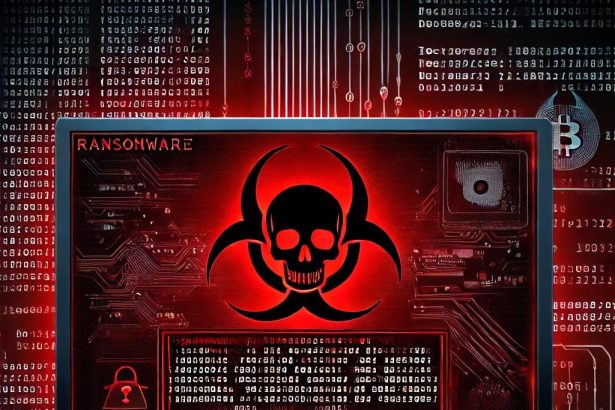The Deoxyz virus is a newly detected form of ransomware that poses a major threat to users’ data security. It locks access to your personal files, changes their names by appending a random extension, and demands a ransom for decryption. Victims usually receive a ransom note in a file titled read_it.txt or are redirected to a malicious script like helpme.bat.
Deoxyz Virus Summary
| Category | Details |
|---|---|
| Threat Type | Ransomware, Cryptovirus |
| File Extension | Random (e.g., .HIXJ, varies with each infection) |
| Ransom Note Filename | read_it.txt or helpme.bat |
| Associated Emails | Trustfiles@skiff.com, Trustfiles@onionmail.org |
| Telegram Contact | hxxps://t.me/Trustfiles (replace hxxps with https manually) |
| Symptoms | Files renamed with random extensions, system slowdowns, ransom note appears |
| Detected As | Varies by AV vendor – may be flagged as “Deoxyz.Ransom”, “Trojan.Ransom” |
| Damaged Files | Documents, images, videos, archives, audio, databases |
| Distribution Methods | Spam emails, infected attachments, pirated software, malicious sites |
| Danger Level | Critical |
This ransomware is known to spread primarily through malicious email attachments, phishing links, or fake software installers from untrustworthy websites. Once inside a device, it encrypts important data, connects to a remote command-and-control server, and may steal sensitive files before encryption. The attackers then demand payment, typically in Bitcoin, and threaten to expose stolen information if ignored.
Ransom Note Text (read_it.txt)
Deoxyz
Dear Client
If you’re seeing this note, your system was breached, sensitive data was leaked, and your files are now encrypted.
To fix this, you must contact us right away.
Email: Trustfiles@skiff.com
If no reply in 24 hours, try: Trustfiles@onionmail.org
Or contact via Telegram: hxxps://t.me/Trustfiles
\n1. DO NOT:\n1.1 Change or move encrypted files. This could make them impossible to recover. \n1.2 Use third-party tools. Doing so might damage your files further. \n1.3 Shut down or restart your computer. It could corrupt your data.
\n2. HOW THIS HAPPENED
Your system had weak security, and we exploited it to encrypt your important data. We also downloaded confidential information. It’s now your choice—either it’s deleted, leaked, or sold.
\n3. STOLEN DATA MAY INCLUDE:
– Legal records and personal documents
– Databases and financial info
– Business communications and backups
\n4. WHAT TO DO
– Reach out to us through the contact info above
– Get our decryption tool by following our steps
– Don’t use recovery software or third-party negotiators—this could make things worse
\n5. IF YOU IGNORE US
– In 4 days, stolen data may be sold or released
– Recovery keys will be erased
– We’ll report the breach to authorities and competitors
\n6. IF YOU WORK WITH US
– We’ll provide a working decryption tool
– We’ll delete stolen files and share proof
– We’ll guide you on fixing your security flaws
\n7. PROOF OF THE BREACH
– We can send you examples of stolen data
– If ignored, your data will be exposed in 4 days
– Your decryption key will be lost forever after that
\n8. BREAKING OUR TERMS
– Will result in permanent data loss
– Leaked info could be shared publicly
– Your organization may face legal consequencesWhat Are Random Extension Encrypted Files?
Deoxyz ransomware targets a wide range of file types and renames them by appending a random extension. Victims may see extensions like .HIXJ, though this changes with each infection. The virus encrypts:
- Documents (
.docx,.pptx,.pdf) - Media Files (
.mp4,.mp3,.jpg,.png) - Archives (
.zip,.rar) - Other essential files
Example:
Original File: Report.pdf
Encrypted File: Report.pdf.HIXJThese encrypted files become unusable without the unique decryption key held by the attackers.
Manual Ransomware Removal Process
Important: Manual removal is recommended only for experienced users, as incorrect actions can lead to data loss or incomplete removal of the ransomware. If unsure, consider the SpyHunter Removal Method for a guided, automated solution.
Step 1: Disconnect from the Internet
- Immediately disable Wi-Fi or unplug the Ethernet cable to prevent the ransomware from communicating with remote servers.
- This can prevent additional encryption or further infections.
Step 2: Boot into Safe Mode
For Windows Users
- Windows 10/11:
- Press Windows + R, type
msconfig, and press Enter. - Under the Boot tab, select Safe boot and check Network.
- Click Apply, then OK, and restart your PC.
- Press Windows + R, type
- Windows 7/8:
- Restart your PC and press F8 repeatedly before Windows starts.
- Select Safe Mode with Networking and press Enter.
For Mac Users
- Restart your Mac and hold the Shift key immediately after the startup chime.
- Release the key when the Apple logo appears.
- Your Mac will boot in Safe Mode.
Step 3: Identify and Terminate Malicious Processes
Windows
- Open Task Manager by pressing Ctrl + Shift + Esc.
- Look for unusual processes consuming high CPU or memory.
- Right-click on the suspicious process and select End Task.
Mac
- Open Activity Monitor (Finder > Applications > Utilities > Activity Monitor).
- Look for unknown or high-resource-consuming processes.
- Select the suspicious process and click Force Quit.
Step 4: Delete Ransomware Files
Windows
- Open File Explorer and navigate to:
C:\Users\[Your Username]\AppData\LocalC:\Users\[Your Username]\AppData\RoamingC:\Windows\System32
- Identify and delete suspicious files (randomly named or recently modified items).
- Clear temporary files:
- Press Windows + R, type
%temp%, and hit Enter. - Delete all files in the Temp folder.
- Press Windows + R, type
Mac
- Open Finder and select Go > Go to Folder.
- Type
~/Library/Application Supportand check for unfamiliar files or folders. - Remove unknown
.plistfiles from~/Library/LaunchAgents.
Step 5: Remove Ransomware Entries from Registry or System Settings
Windows
- Press Windows + R, type
regedit, and hit Enter. - Navigate to:
HKEY_CURRENT_USER\SoftwareHKEY_LOCAL_MACHINE\Software
- Identify and delete ransomware-related registry entries.
Mac
- Open System Preferences > Users & Groups.
- Select the Login Items tab and remove any unknown startup programs.
- Check
~/Library/Preferencesfor malicious settings.
Step 6: Restore System Using a Backup or Restore Point
Windows
- Press Windows + R, type
rstrui, and press Enter. - Choose a restore point from before the infection and proceed.
Mac
- Restart your Mac and enter macOS Utilities by holding Command + R.
- Select Restore from Time Machine Backup and restore a safe backup.
Step 7: Attempt to Decrypt Files
- Check No More Ransom (www.nomoreransom.org) for available decryption tools.
- If unavailable, restore files from backups.
Automated Ransomware Removal with SpyHunter
If manual removal is too complex or risky, SpyHunter offers a safer, automated method for detecting and removing ransomware.
Step 1: Download SpyHunter
- Get SpyHunter from the official Enigma Software website.
Step 2: Install SpyHunter
- Open the downloaded file (
SpyHunter-Installer.exeor.dmgfor Mac users). - Follow the installation prompts.
- Launch SpyHunter upon completion.
Step 3: Run a Full System Scan
- Click Start Scan Now to detect malware and ransomware.
- Wait for the scan to complete and review detected threats.
Step 4: Remove Detected Ransomware
- Click Fix Threats to remove identified ransomware components.
- SpyHunter will clean your system automatically.
Step 5: SpyHunter’s Custom Malware HelpDesk
- If ransomware persists, use SpyHunter’s Malware HelpDesk for custom malware fixes.
Step 6: Restore Files
- Use backups stored on external drives or cloud storage.
- If no backup is available, check No More Ransom for decryption tools.
Preventing Future Ransomware Attacks
- Keep backups: Use cloud storage or an external hard drive.
- Install a reliable security tool: SpyHunter offers real-time protection against malware.
- Enable Windows Defender or Mac security features for additional protection.
- Avoid phishing emails and unknown attachments.
- Regularly update Windows, macOS, and installed applications.
If you are still having trouble, consider contacting virtual technical support.




